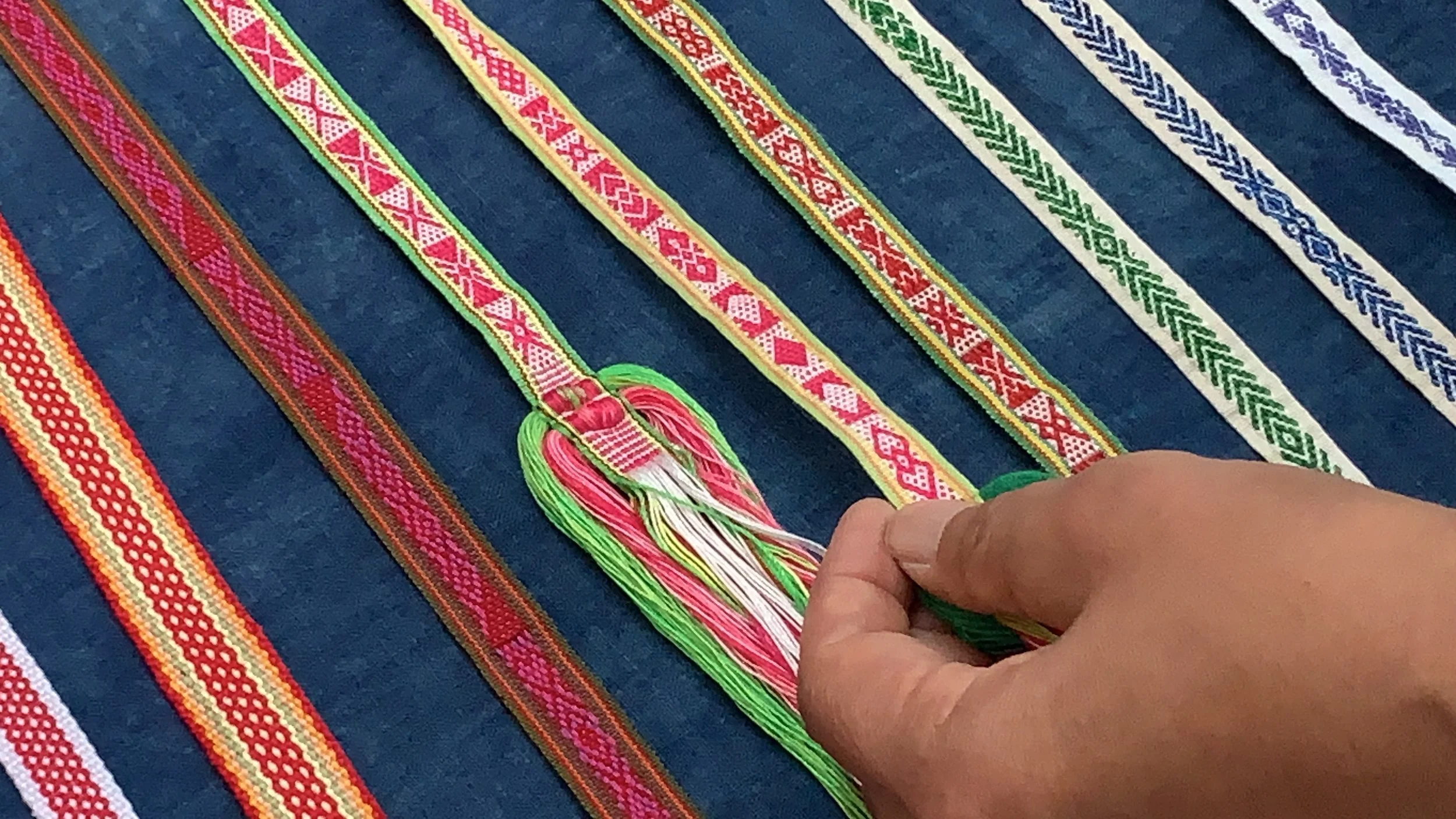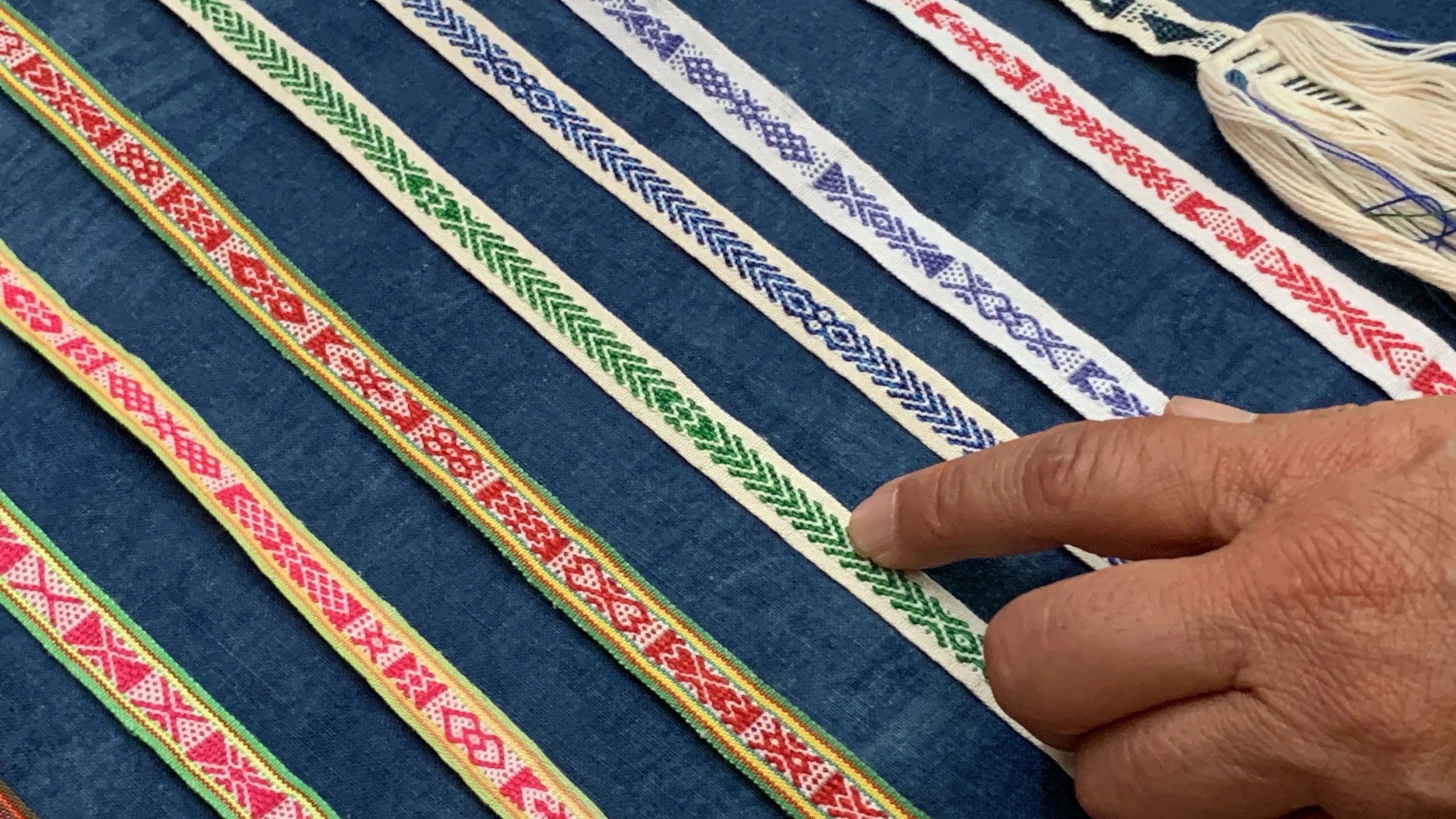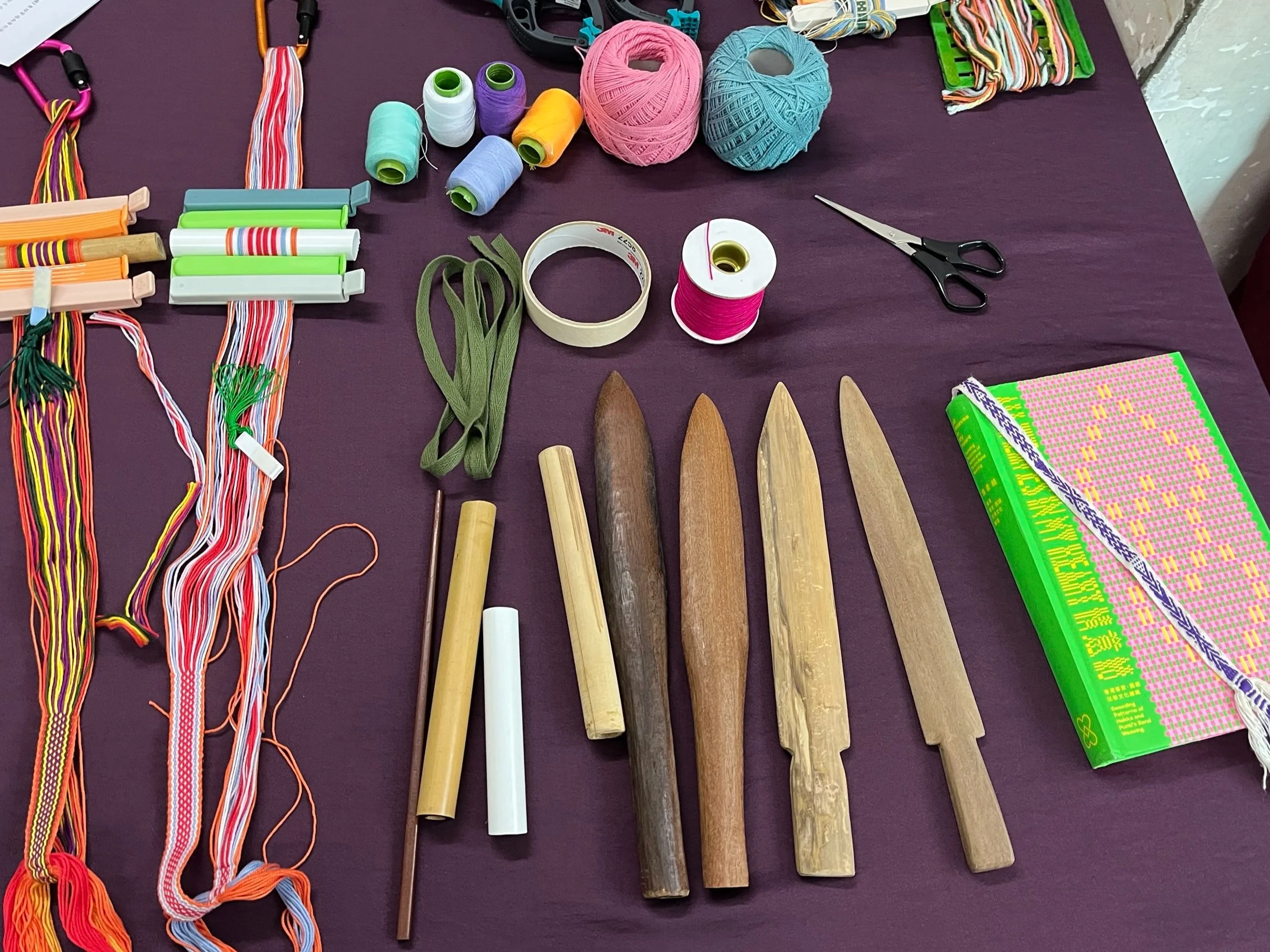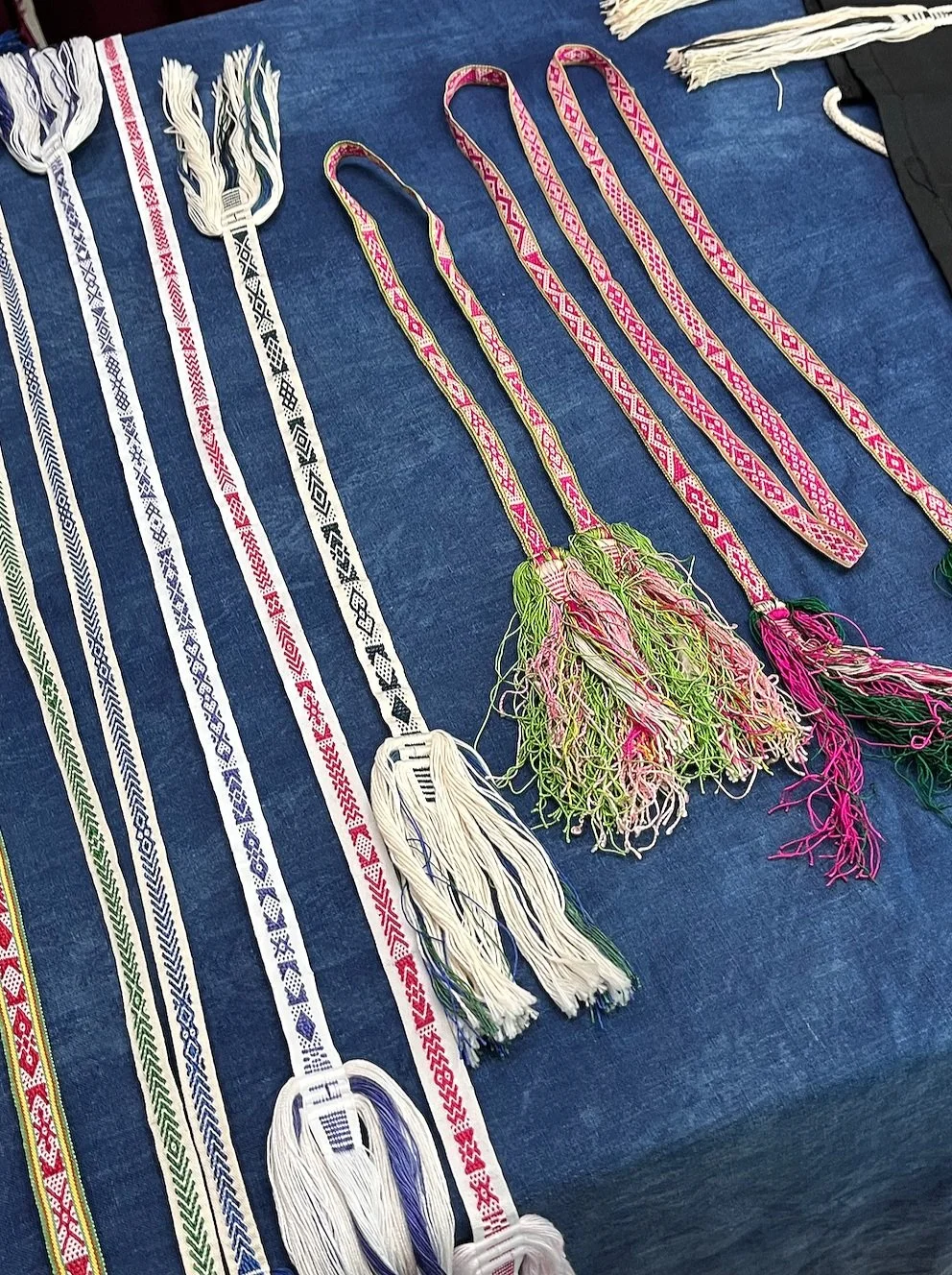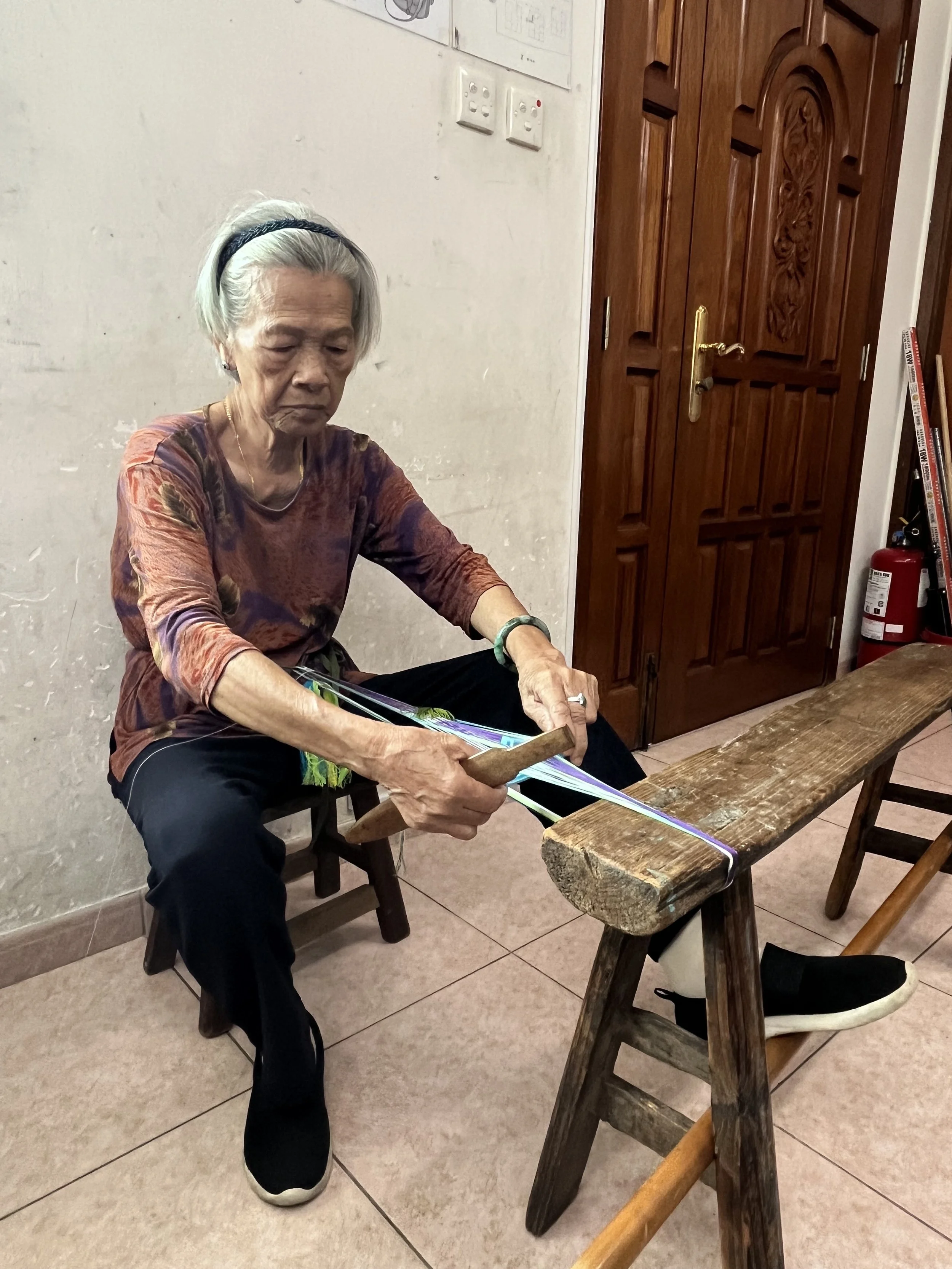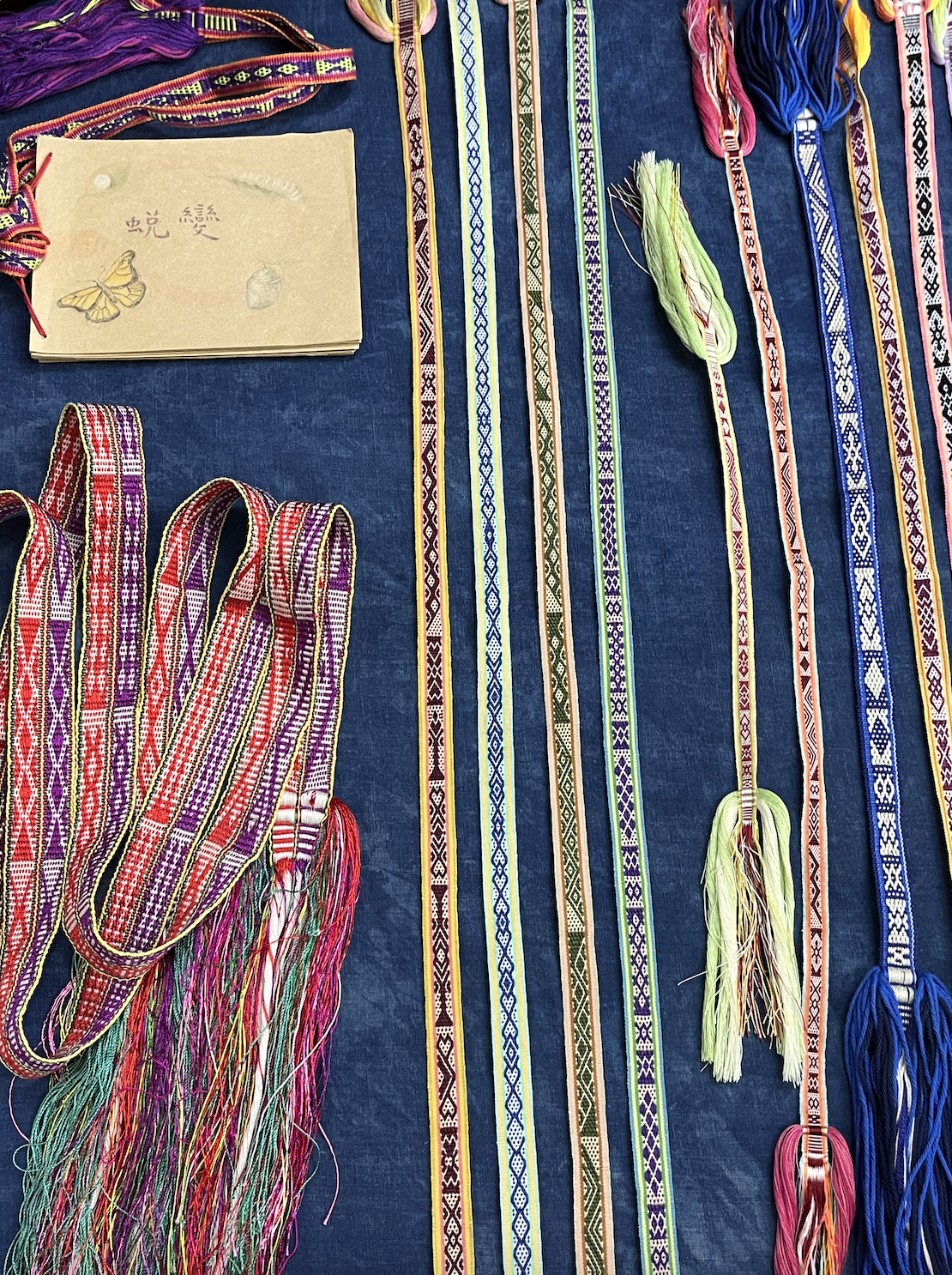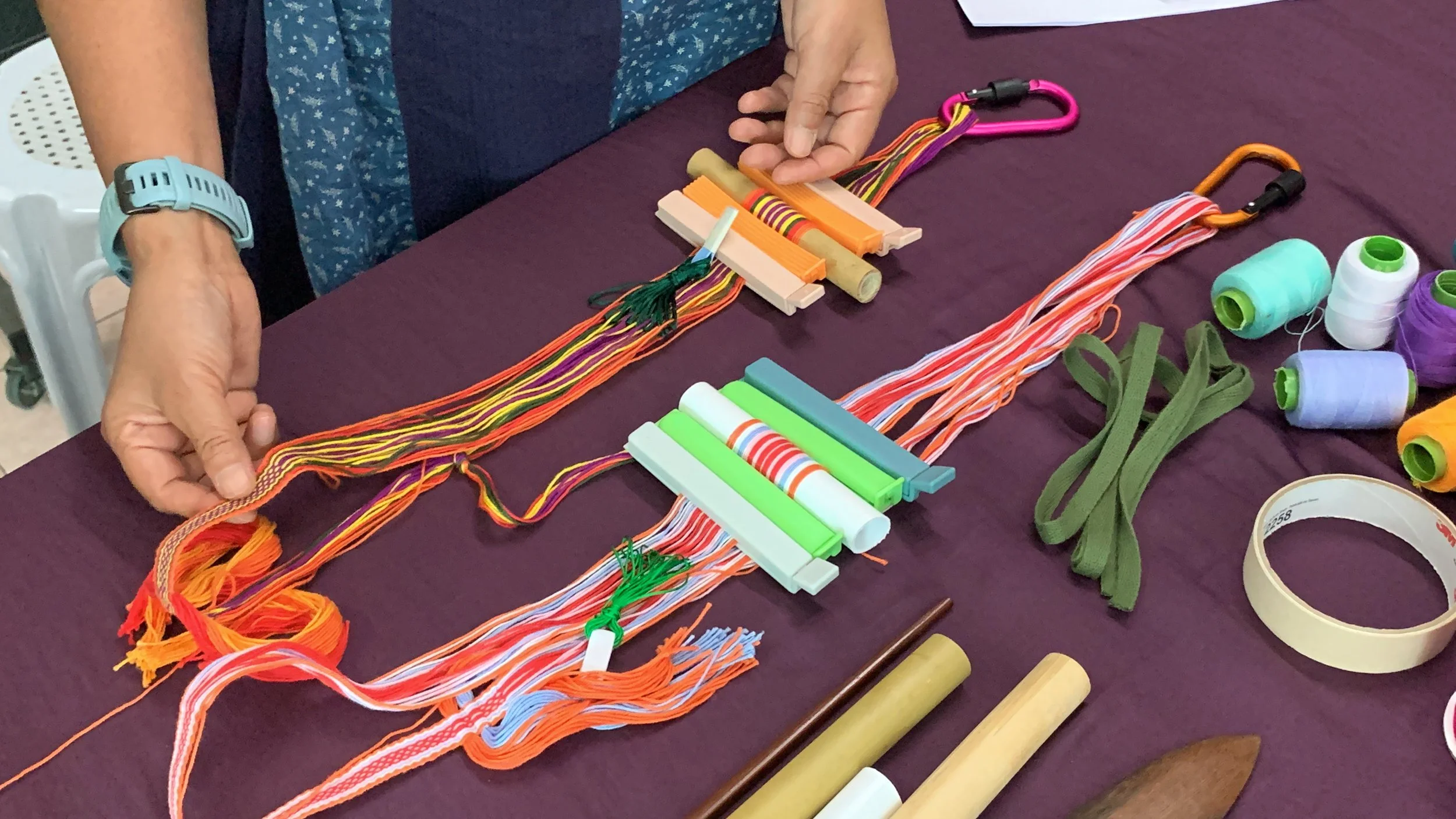Band Weaving of the Walled Villages in Hong Kong
Ms. Leung Siu-ha (Aunt Lun) and Ms. Gladys Ya-yin Chiu are inheritors of Hakka’s patterned bands (花帶), an intangible cultural heritage of the cosmopolitan city of Hong Kong.
From the late 19th century, Hakka and Punti people in the Guangdong region built walls around their villages to protect them from pirates. Resources were scarce in the walled villages. In the 1950s, band weaving emerged as a distinctly crafted everyday accessory. Aunt Lun mentioned that due to life’s hardship, there was no extra money to buy accessories or gifts, so women would typically buy threads at the market and handcraft patterned bands as gifts or use them as apron ties and sun hat bands. Patterned bands held cultural significance as wedding gifts - Hakka and Punti women would hand-weave bands to give to the groom's family as a sign of respect and honour.
Punti style on the left, Hakka style on the right
The pattern "little olive"
The aesthetics of patterned bands
The combinations and motifs of patterned bands are diverse. Hakka and Punti’s chosen styles are distinctly different. Hakka people favour a simple two-colour band weave, with patterns of one colour on a white background. In contrast, Punti people use a variety of colours with bright contrasting tones, resulting in elaborate and splendid patterned bands. Like most traditional textiles, patterned bands not only highlight stylistic designs but are embedded with symbols and signify the identity of the weaver. Married women wear red thread bands, while unmarried girls wear plain colour bands with white threads. The "little olive" (欖仔) pattern symbolises a wish for the bride to bear sons and is filled with good wishes. If the patterned band is turned over, the "Banana Shrub” (含笑花) pattern appears, and together they are known as "little olive enclosed by Banana Shrub" (含笑包欖仔).
Tools used in weaving include threads, spools, shed sticks and other items
Using "Pak Kung” for shedding
The process of band weaving
Aunt Lun indicated that the band weaving technique is easy to learn but hard to master, and demonstrated each step:
Choosing and Arranging Warp Colours: There are not many restrictions on colour selection, but the edges should be of the same colour and the arrangement symmetrical.
Winding the Warp: The prepared warp is wound onto a fixed tool.
Threading the Warp through Spools: Different coloured threads are placed on the spools.
Making the "Pak Kung": act like a harness for shedding
Blind Weaving: The horizontal threads are interwoven with the warp threads, locking the head of the band.
Adding Tassels: A bundle of threads is tied and added to the pattern band weaving.
Band weaving: Various combinations of horizontal and warp threads are formed by lifting and pressing the threads, creating different patterns.
Finally, add the tassels and secure the horizontal threads to finish. If a mistake occurs during weaving, the section must be undone to the point before the error, using a toothpick to pick out the threads and reweave. If there's a pause in weaving, the warp threads should be clamped tightly to prevent them from tangling.
A collection of patterned bands
Aunt Lun demonstrated band weaving
A collection of patterned bands
Gladys has been apprenticing with Punti and Hakka grannies in recent years inheriting the art of band weaving. After spending several years learning and practising, Gladys collaborated with the Caritas Lung Yeuk Tau Community Development Project for exhibitions and workshops on the aesthetics of patterned bands. The project also helped preserve the bands and clothes of several grannies.
Innovating with patterned bands
Aunt Lun agrees that even traditional crafts need to keep up with the times. Nowadays, some tools for band weaving have also seen significant changes. For instance, due to the increasing difficulty in obtaining bamboo, traditionally bamboo-made winding spools are replaced with plastic spools. Regarding the selection of thread materials, Gladys mentioned that it is now hard to source threads with good colour fastness, and high-tenacity lace yarn, denim thread and cross-stitch threads are often used for band weaving.
Proudly showcasing her creation, Aunt Lun experimented with new materials and weaved with wool yarns. This courageous attitude towards innovation and new attempts continues the practice of band weaving in Hong Kong.
References: "Decoding Patterns of Hakka and Punti’s Band Weaving"
Acknowledgements: Caritas Lung Yeuk Tau Community Development Project
Traditional bamboo winding spool in the back, and modern plastic winding spool in the front
Ms. Gladys Chiu Ya-yin (left) and Ms. Leung Siu-ha (right)

